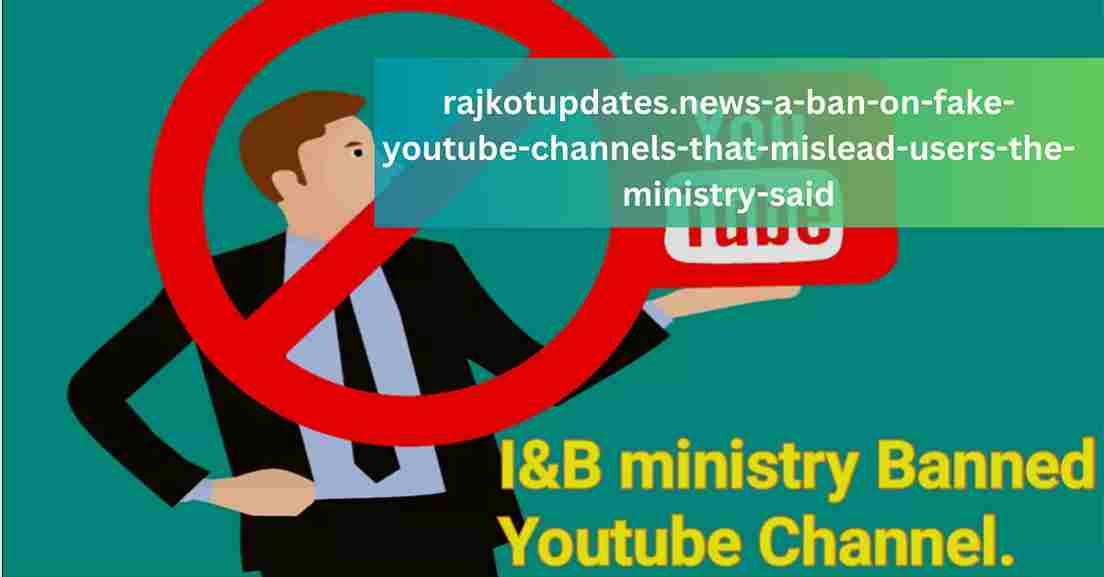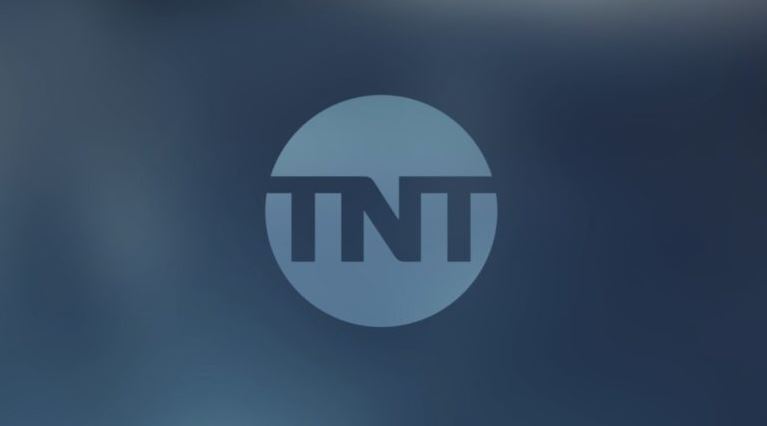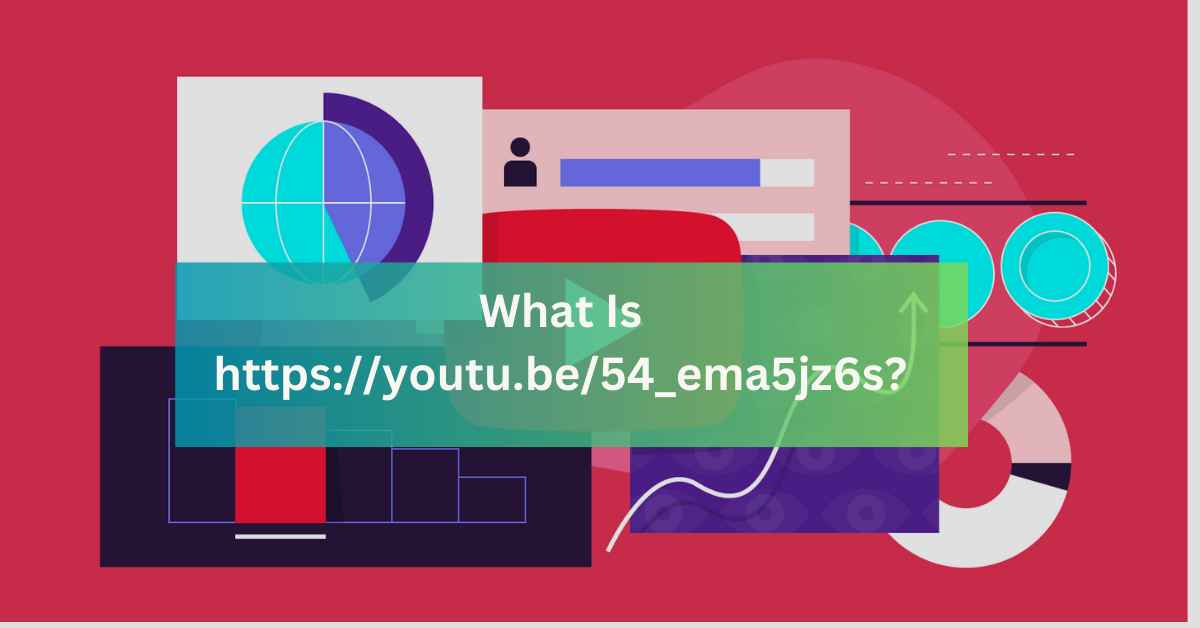
rajkotupdates.news-a-ban-on-fake-youtube-channels-that-mislead-users-the-ministry-said
In the wake of the digital revolution, content consumption patterns have shifted dramatically towards online platforms, with YouTube emerging as a leading player.
Over two billion logged-in users visit YouTube each month, according to the platform’s statistics. Amidst the abundance of content, however, a persistent issue of fake channels has surfaced, misleading users and tarnishing the credibility of the platform.
In a recent move, the Ministry has imposed a ban on such fraudulent channels, sparking a renewed debate on the content authenticity and the responsibility of digital platforms.
Table of Contents
Understanding the Problem: rajkotupdates.news-a-ban-on-fake-youtube-channels-that-mislead-users-the-ministry-said
Fake YouTube channels have grown alarmingly in recent years. These channels often impersonate popular creators, celebrities, or brands, misleading viewers for their benefit.
They exploit the trust of unsuspecting users, who believe they are interacting with genuine entities, to propagate false information, promote scams, or simply generate ad revenue through increased views and subscriptions. Also Read: wellhealthorganic.com:alcohol-consumption-good-for-heart-health-new-study-says-no
The Impact: A Threat to User Trust and Platform Integrity
The impact of these fraudulent channels goes beyond individual users. They pose a significant threat to the credibility of the platform and can also harm genuine creators and brands by damaging their reputation and diverting their potential audience.
Furthermore, the spread of misinformation can have severe societal consequences, influencing public opinion, causing unnecessary panic, or promoting harmful behavior.
The Ban: A Necessary Step for User Protection
Recognizing the severity of the problem, the Ministry has decided to ban these fake channels.
This decision aims to protect users from misinformation and scams, ensure the credibility of content on the platform, and uphold the rights of genuine creators and brands.
The Ministry has also underscored the importance of YouTube’s cooperation in this initiative, emphasizing the platform’s responsibility in maintaining a safe and trustworthy digital environment.
The Mechanism: Identifying and Eliminating Fake Channels:
To implement the ban, a robust mechanism is required to accurately identify fake channels. This involves a combination of automated systems, user reporting, and manual review.
However, the effectiveness of these systems has been questioned, and the Ministry’s decision underscores the need for stronger measures.
Users also play a crucial role in this process. They can report channels that they suspect to be fake, triggering a review by YouTube’s team. To assist users in making informed judgments, YouTube provides guidelines on how to recognize fake channels.
These include signs like inconsistencies in branding, lack of verified badges, unusual upload patterns, and suspicious links in the video descriptions.
Despite these measures, the manual review remains an essential component due to the complexities involved in assessing the authenticity of a channel. This requires significant resources rajkotupdates.news-a-ban-on-fake-youtube-channels-that-mislead-users-the-ministry-said, but the Ministry insists that it is a necessary investment to maintain the platform’s integrity.
Looking Ahead: The Challenge of Ensuring Authenticity:
While the ban is a significant step, ensuring the authenticity of the content on YouTube remains a daunting task. New fake channels can emerge as quickly as old ones are removed, and sophisticated techniques can make them harder to identify.
To address this, the Ministry is advocating for more stringent identity verification processes for channel creators, such as mandatory two-factor authentication and proof of identity.
Another challenge is balancing the need for authenticity with respect for user privacy and freedom of expression. Some users may choose to remain anonymous for legitimate reasons, and their rights need to be protected.
This requires a nuanced approach that can distinguish between legitimate anonymity and deceptive impersonation.
The Ministry’s decision has also raised questions about the responsibility of other digital platforms. Fake profiles are not unique to YouTube and can be found on various social media and content-sharing platforms.
Some argue that these platforms should also take proactive steps to ensure the authenticity of their users, while others caution against over-regulation that could stifle creativity and diversity of content.
Conclusion Of rajkotupdates.news-a-ban-on-fake-youtube-channels-that-mislead-users-the-ministry-said:
In the end, the fight against fake channels is a collective responsibility. Digital platforms like YouTube have a crucial role to play in maintaining the integrity of their content and protecting their users.
They need to invest in robust systems to detect and eliminate fake channels and implement stringent identity verification processes. At the same time, they must respect users’ rights to privacy and freedom of expression.
Users, on the other hand, need to be vigilant and critical of the content they consume. They should be aware of the signs of fake channels and report any suspicious activity.
They also need to support genuine creators by subscribing to their channels and engaging with their content.
The Ministry’s ban is a significant step in this direction, but it is only the beginning. The challenge of ensuring content authenticity in the digital world is an ongoing one, requiring continual efforts from all stakeholders.
It is a journey that will require navigating difficult trade-offs, but the rewards – a safer and more trustworthy digital environment – are worth the effort.
FAQ About rajkotupdates.news-a-ban-on-fake-youtube-channels-that-mislead-users-the-ministry-said
1. How will the Ministry and YouTube distinguish between parody channels and fake channels?
Parody channels, which fall under fair use, are allowed as long as they clearly indicate their nature to the audience. Fake channels, on the other hand, impersonate others without such disclaimers.
The distinguishing process relies on careful review and the consideration of factors like channel descriptions, content, and audience feedback.
2. What penalties will fake YouTube channels face under the new ban?
The specific penalties for fake channels under the new ban have not been detailed yet. Typically, such violations lead to channel suspension or removal, and in some cases, could result in legal actions.
3. What steps can users take if they suspect they’ve encountered a fake channel?
Users are encouraged to report suspected fake channels using YouTube’s reporting feature. They should provide as much detail as possible to facilitate the review process.
Users are also advised to refrain from engaging with suspicious channels to avoid potential scams or misinformation.
4. Could this ban lead to censorship or restriction of creative freedom on YouTube?
The intention of the ban is not to censor content but to protect users from deception and misinformation. Channels that clearly distinguish themselves as fictional, parodies, or commentary should not be affected.
However, it’s a delicate balance and the implementation of the ban will need to ensure it does not inadvertently stifle creative freedom.
5. Will this ban affect the process of starting a new YouTube channel?
While the ban primarily targets existing fake channels, it could potentially lead to stricter measures for new channels. This may include more rigorous verification processes to ensure the authenticity of the channel creator.
However, these changes aim to ensure a safer, more trustworthy platform and should not deter genuine creators.
You May Also Like

Tntdrama/activate | Everything You Need To Know About It
April 8, 2024
5+ Various Ways to Get More Followers on Instagram 2022
October 9, 2022